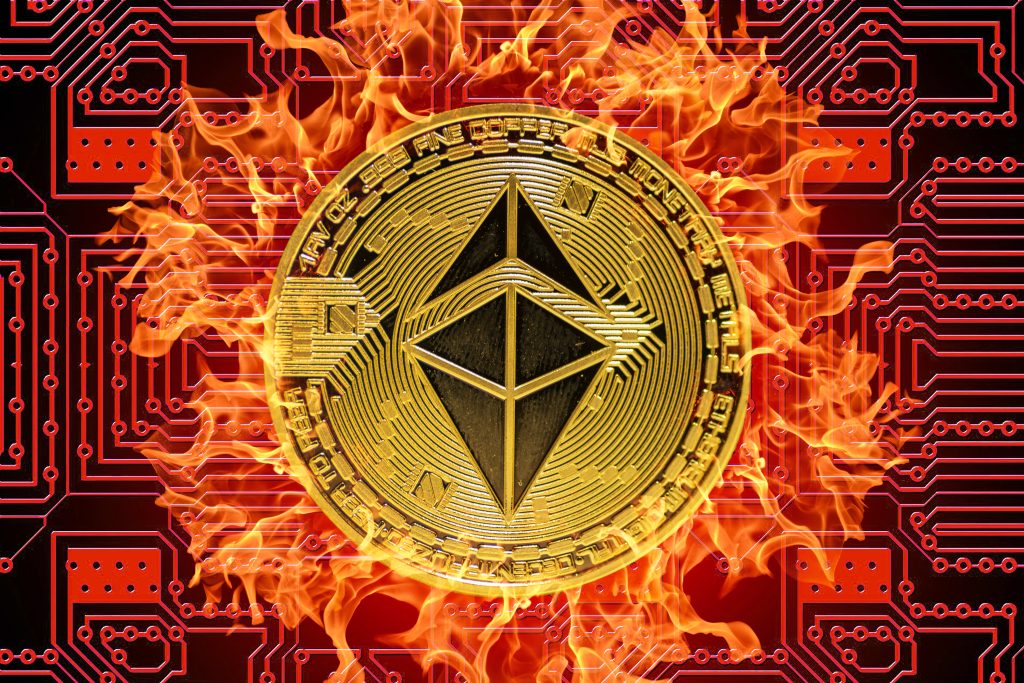In the dynamic landscape of cryptocurrencies, burning coins is a concept that has become increasingly important for investors and developers alike. But what is it about coin burning that makes it so significant, and how does it tie into the broader cryptocurrency ecosystem? In this article, we’ll take a deep dive into the fascinating world of crypto burn, exploring the process, its purpose, and the impact on token value. You’ll learn how this deflationary mechanism is not just about controlling supply but can also create unique opportunities and experiences within the ever-growing NFT market. So sit back, and let’s embark on a journey to understand the intricacies of coin burn and why it’s worth keeping an eye on.
The Economics Behind a Coin Burn
At its core, coin burning is a strategic method used by cryptocurrency projects to control the supply of digital assets and create scarcity. By intentionally removing a portion of the tokens from circulation, projects can influence market dynamics and potentially increase the value of the remaining tokens. The concept is somewhat analogous to stock buybacks in traditional finance, where companies repurchase their own shares to reduce the number of outstanding shares, effectively increasing the value of the remaining shares.
Coin burning can serve multiple purposes, such as:
- Creating scarcity and driving up demand for a particular digital asset
- Demonstrating commitment to the project by reducing the supply of founder or team tokens
- Stabilizing the value of a cryptocurrency by adjusting the supply in response to fluctuations in demand
Understanding the economics of coin burning is essential for evaluating a project’s potential and making informed investment decisions.
How Coin Burning Works: The Burning Process


The process of a coin burn involves sending tokens to a unique crypto wallet, commonly referred to as a burner or eater address. These wallets are linked to addresses that do not possess private keys, meaning the tokens sent to these addresses cannot be accessed, spent, or retrieved. In effect, this process permanently removes the tokens from circulation.
Some blockchains have built-in mechanisms for burning tokens, while others require manual intervention. For example, the Ethereum blockchain used the burn mechanism during its transition from a proof-of-work to a proof-of-stake network, automatically burning a portion of the transaction fees collected.
It’s important to note that not all cryptocurrencies have a maximum supply, and the impact of coin burning may vary depending on the nature of the digital asset. For instance, burning a deflationary cryptocurrency like Bitcoin, which has a fixed supply of 21 million coins, could potentially have a more significant impact on its value than burning an inflationary token with no predefined cap.
Reasons and Benefits of Coin Burn
Coin burning serves various purposes and offers multiple benefits to both projects and investors. Let’s explore some of these reasons and advantages:
- Price Stability: Burning tokens can help stabilize the value of a cryptocurrency, particularly for stablecoins. By burning coins when demand decreases and minting new tokens when demand increases, projects can maintain their dollar-pegged value and ensure price stability.
- Scarcity and Value Appreciation: Reducing the supply of tokens can create scarcity and increase demand, leading to potential price appreciation. This benefits investors holding the tokens, as their assets may become more valuable over time.
- Controlling Inflation: Inflationary cryptocurrencies may use coin burning as a means of controlling the rate of inflation. By periodically removing tokens from circulation, projects can prevent excessive inflation, which could otherwise lead to a decrease in the token’s value.
- Improved Network Security: Some blockchains use coin burning as part of their consensus mechanism, ensuring that miners have a vested interest in the network’s security. By requiring miners to burn a certain amount of coins to mine new blocks, projects create a financial incentive for miners to maintain a secure and stable network.
- Token Utility and Governance: Coin burning can be used as a mechanism for decentralized governance, allowing token holders to vote on proposals and participate in the decision-making process. In some cases, burning tokens can unlock additional benefits, such as access to premium features or exclusive content.
Proof of Burn: A Consensus Mechanism
Proof of Burn (PoB) is a consensus mechanism used by some blockchains to secure their networks and ensure fair distribution of newly minted tokens. Unlike Proof of Work (PoW), which requires miners to expend computational resources to validate transactions and mine new blocks, PoB requires miners to “burn” a certain amount of cryptocurrency to participate in the mining process.
This burning process involves sending the required tokens to an eater address, effectively removing them from circulation. The more tokens a miner burns, the higher their chances of mining the next block and receiving the associated rewards.
There are several advantages to using PoB as a consensus mechanism:
- Energy Efficiency: PoB consumes significantly less energy compared to PoW, making it a more environmentally friendly alternative.
- Fair Distribution: By requiring miners to burn tokens, PoB ensures a more equitable distribution of newly minted tokens. This helps prevent centralization and encourages a more diverse and decentralized network.
- Long-term Commitment: By burning tokens to participate in the mining process, miners demonstrate a long-term commitment to the network. This helps maintain network security and stability, as miners have a vested interest in the project’s success.
- Reduced Manipulation: PoB reduces the likelihood of a “51% attack” – a situation where a single miner or mining pool controls more than 50% of the network’s computational power. Since such an attack would require a significant amount of tokens to be burned, it becomes prohibitively expensive for potential attackers.
Coin Burning and NFTs
The concept of a coin burn has found its way into the thriving world of non-fungible tokens (NFTs), bringing unique benefits and value propositions to this digital asset space. Here’s how coin burning and NFTs intersect:
- NFT Upgrades and Transformations: In some NFT projects, burning tokens can unlock upgrades or transformations for existing NFTs. For example, Yuga Labs’ Mutant Ape Yacht Club allowed Bored Ape holders to transform their apes into Mutant Apes by burning Mutant Serum NFTs. Another example is within Coinary that soon you’ll have the chance to burn two NFT Dragons from Dragonary and get one NFT Kart to play in Fantasy Racing. This innovative approach adds value and excitement to the NFT ecosystem.
- Rarity and Scarcity: Burning NFTs can create scarcity and increase the rarity of the remaining NFTs in a collection. This can lead to an increase in demand and value for the surviving NFTs, benefiting collectors and investors.
- Reveal Drops: Some NFT projects use coin burning as part of their “reveal drop” mechanism. In this model, NFT buyers purchase tokens without knowing the appearance or rarity of the underlying asset. To reveal the NFT, the buyer must burn the purchased token, creating an element of surprise and anticipation.
- NFT Governance: Coin burning can also play a role in NFT project governance. Token holders may need to burn a certain number of tokens to vote on project decisions or proposals, ensuring active and committed participation in the project’s development.
As NFTs continue to evolve and gain popularity, coin burning will likely play an increasingly important role in this digital asset space, offering new opportunities and value propositions for artists, collectors, and investors.
Conclusion
Coin burning is a multifaceted concept that plays a critical role in various aspects of the cryptocurrency and NFT ecosystems. From maintaining price stability and controlling inflation to securing networks and enhancing NFT value, coin burning has numerous applications and benefits.
Understanding the mechanics, reasons, and implications of coin burning can provide valuable insights for investors, developers, and enthusiasts alike. As the digital asset landscape continues to expand and evolve, coin burning will remain an essential tool for shaping the future of cryptocurrency projects and NFT experiences.









